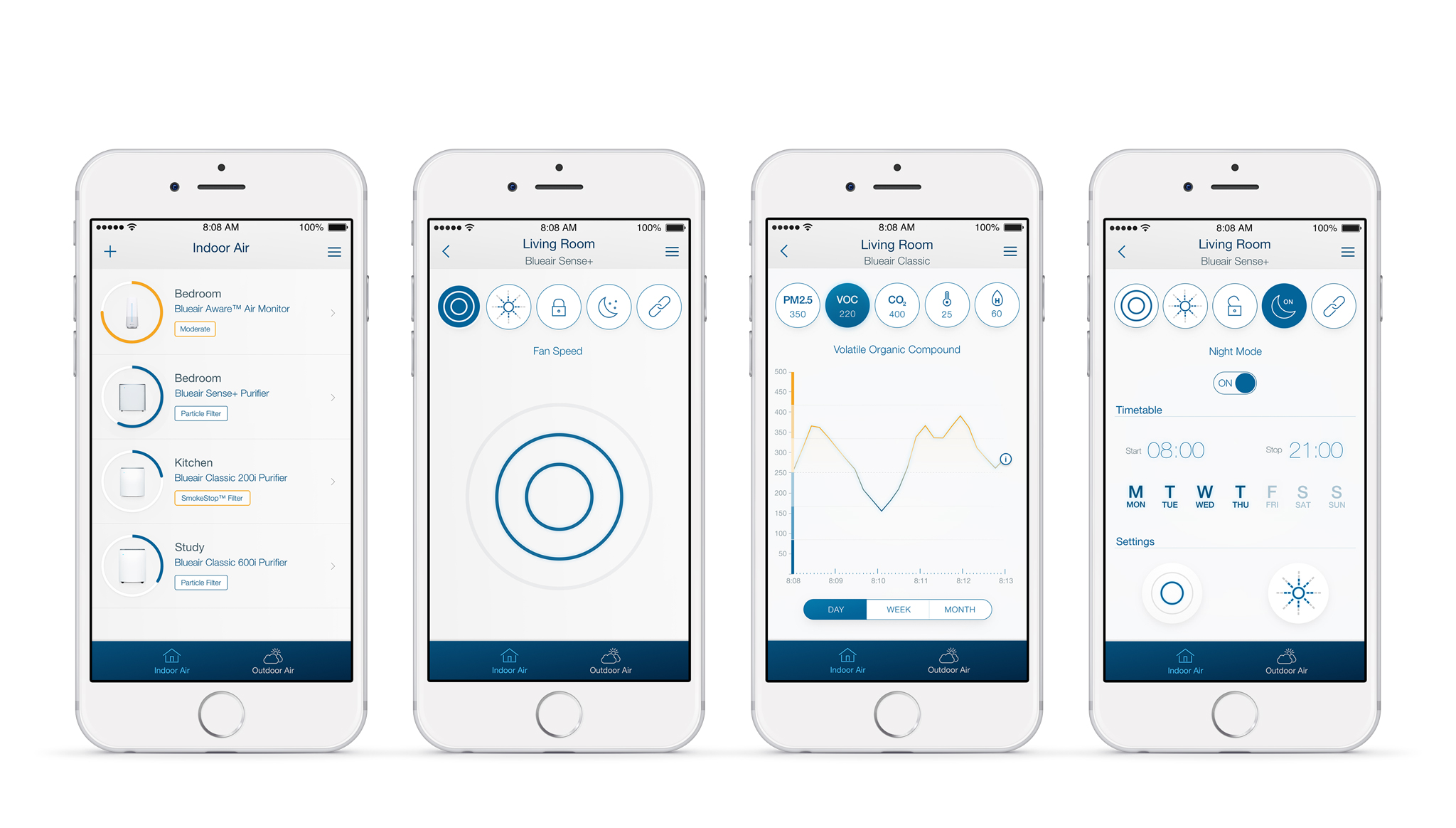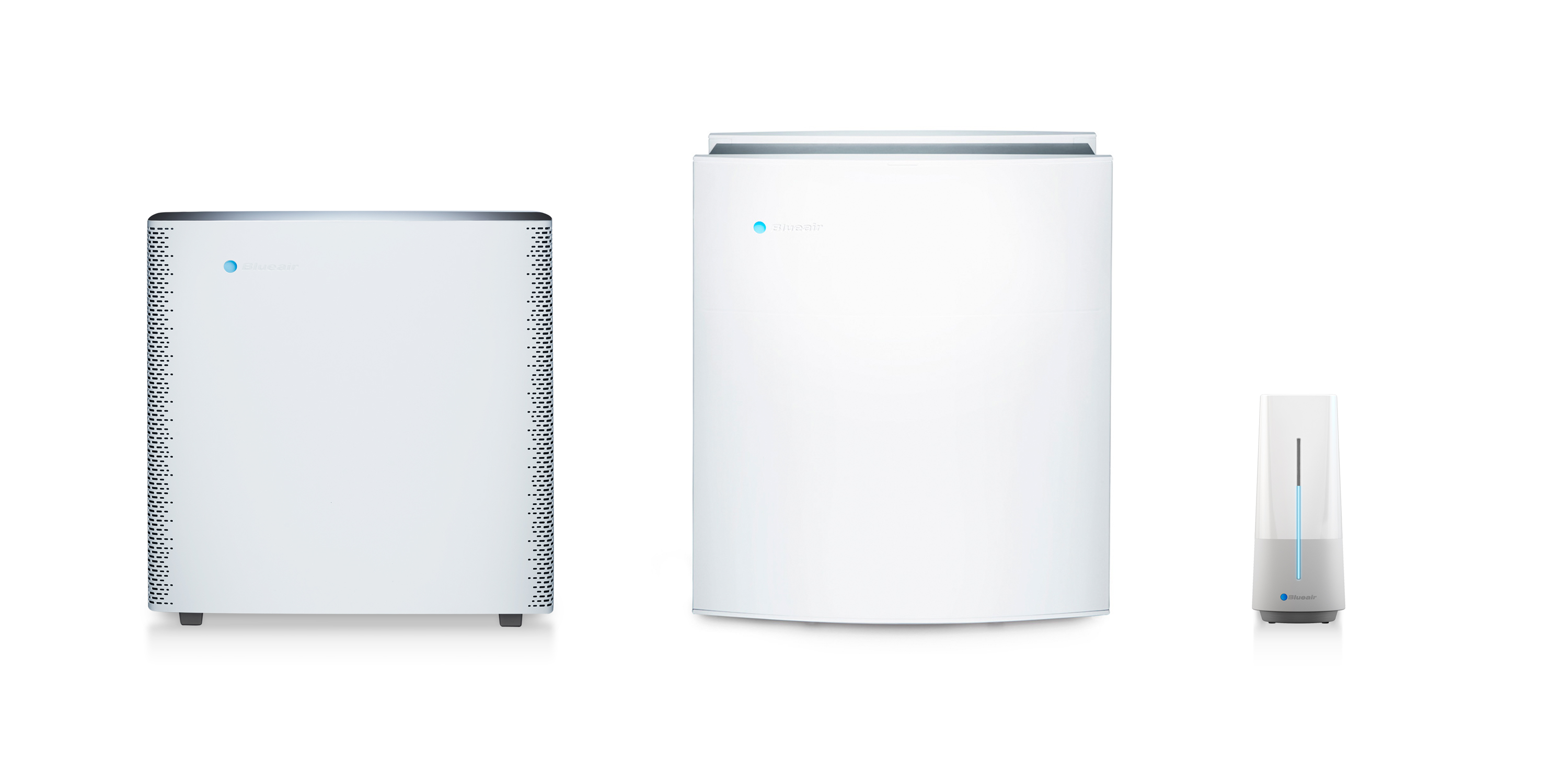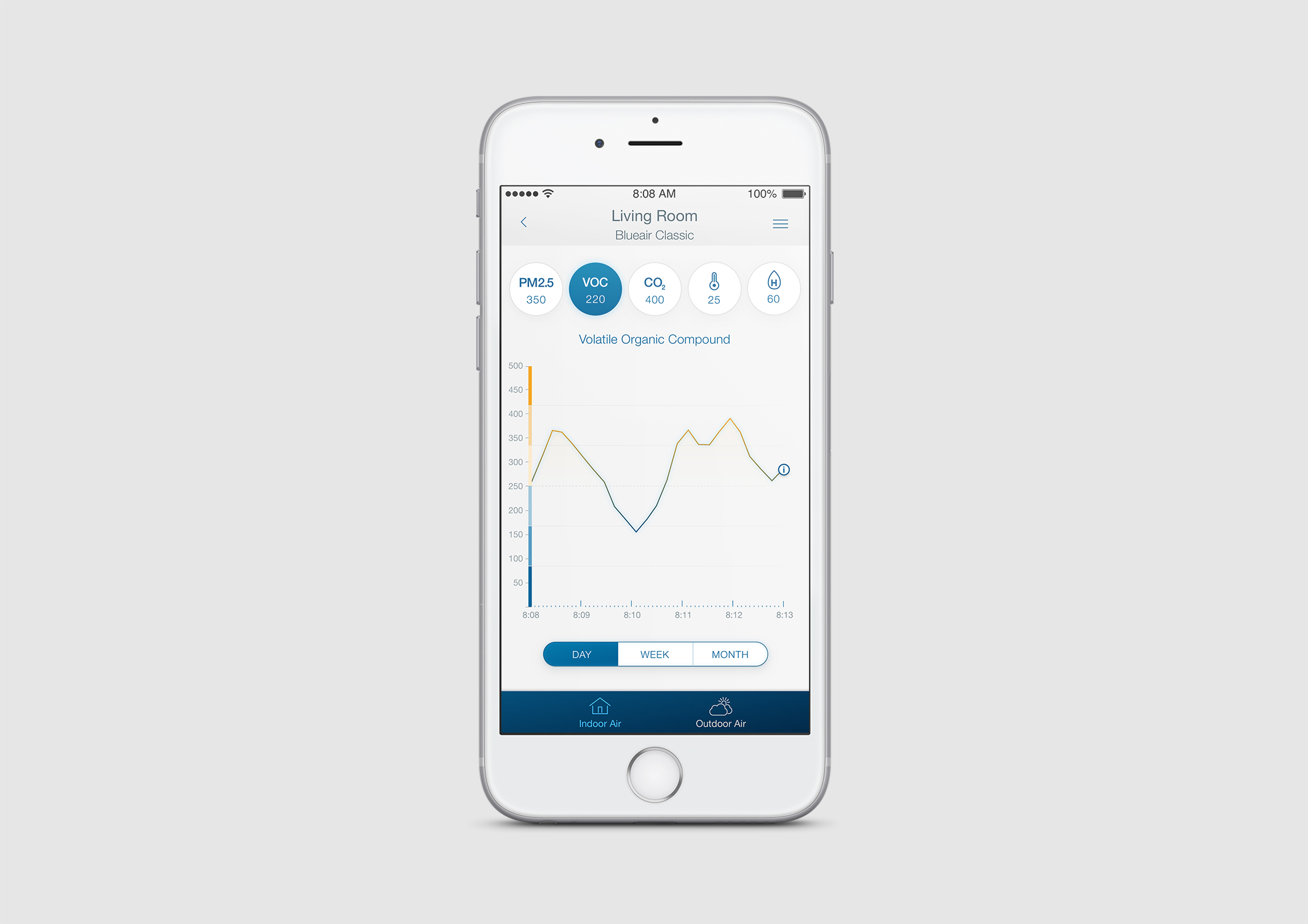PROJECT
Blueair iot app
DATE: January 2015 - September 2015
the promotional video shows the app and product ecosystem
1. INTRODUCTION
Blueair is the world leader in helping consumers breathe healthier, cleaner indoor air at home and work. They have pioneered indoor air purification as a means to improve human health and wellbeing for over twenty years. I joined the team as a digital transformation partner, digitalising and reworking their hardware offering. This first of this was the Blueair IoT application which allowed users to connect up to 5 different devices; including an array of air purifiers and an air monitoring device called the Blueair Aware. When I joined as the design lead, I was presented with a look-and-feel board, with the hardware products in their conceptual phases. There was a lot of ambiguity around how the entire ecosystem would tie together. I moved fast, creating a design vision for the what the digital offering could look like, inspired by what was presented from the industrial design side. I creates an experience familiar to clients from using their previous products. I worked closely with the engineering team and the first working prototype was out within 3 months. This allowed us to put the experience in front of users, and then iterate on feedback. We soon celebrated by winning two ‘Envisioneering’ Innovation and Design Awards for the worlds first connected air purification products. The Wi-Fi-enabled products and ecosystem were also highlighted as ‘Showstoppers’ at Europe’s Biggest Tech Show, IFA in Berlin during the 2015 messe. At IFA, 70+ companies competed to win recognition for their innovation, design and value to consumers and the trade show attracts key startups, disruptors and innovators. The app also ranked as one of the top ten best tech gizmos at the IFA show. The Blueair transformation was an immense success, with the company eventually selling to Unilever for billions of Swedish Krone. This was a considerable achievement and testament to the quality of the job done. The Blueair app and complementary devices were the world’s first fully working intelligent indoor air monitoring, control and purification system. The Blueair App was shortlisted for the clean technologies award in the same year of its release. The Apple watch was also released in 2015, and I worked on a version of the app for the watch and Android wearables. I also worked with an external team to refine the usability of the Blueair in-car air system and the hands-free interaction necessary for this.

2. PROJECT and team GOALS
My first steps were to take to research and explore the air quality device competitors and explore the landscape. I spoke to floor staff at Blueair showrooms and interviewed stakeholders, air quality scientists, industrial designers and commercial teams. I then moved ahead exploring various ideas, doing some initial wireframes, and working closely with the product manager to define an MVP. A key goal was to be first to the global market to establish Blueair as an industry leader, and this set the stage for rapid iteration and testing. Mobile interaction and interface guidelines were also rapidly evolving at the time with the release of the iPhone 4 the previous year and the introduction of the first Apple Watch. We worked through these new challenges proactively and kept our focus locked to the end goals and hard deadline of the IFA Berlin trade show. Given the parallel workflow with physical products, I had to figure out the interaction challenges (like failed connection attempts) with the devices being bare circuit boards, wires and LEDs on my desk. The clear goals and desired outcomes were always a beacon to work towards, even under the pressure of the hard deadline. It was a great adventure, exploring experiences across new devices like the Apple Watch was thrilling.

3. THE TEAM
When I started on the Blueair project, I took over from a design agency that had put together an initial look-and-feel board for the updated brand and app. I worked directly with the product manager and offshore engineers, as well as various product and marketing teams at Blueair. I guided the implementation of the design, worked closely with the offshore engineering and technical teams and ensured that product interactions were implemented with the best possible user experience. Given the transparent way I encouraged everyone to work, it made it easy to spot opportunities to raise the quality bar. I interacted with air quality scientists to define thresholds and translate the science into simplified customer air quality data. I partnered with the Blueair teams’ industrial designers and worked with them to formulate displays, buttons and icons for the physical products. Many of which needed to translate clearly across geographies and cultures.

4. MY ROLE
Design Vision
My role was to set the design vision for the application and help to solidify interactions across the connected product ecosystem. I also shaped and defined the visual language to be on-brand alongside a streamlined user experience. The way I approach design is to be inclusive and stimulate collaboration across teams by creating focus on the user. I believe that effective innovative solutions require focussed and empowered teams.
Sketching / Planning
I created flow diagrams and information architecture outlines, and a myriad of wireframes throughout the process.
Documentation / Presenting Data
I thoroughly documented interactions to clarify the intended experience making for a happy engineering team. I presented results to senior stakeholders at every point of the journey valuing their feedback/criticism . I collated feedback, finding patterns and then reported this to the broader team in order to drive data informed decision making.
Prototyping and User Testing
I built low and high fidelity interactive prototypes using Sketch and Invision (the industry standards at the time) and tested these, first with the team and then with users.
We also conducted remote user testing across the globe and then refined the product offering around this feedback which was often culturally nuanced.
Working with the Engineering Team
To ensure an exceptional standard, I did not merely hand over my design work to the engineers but rather closely communicated with them to guide the implementation. I paid attention to where challenges were arising and supported the team in finding resourceful compromises so that the experience would not be compromise